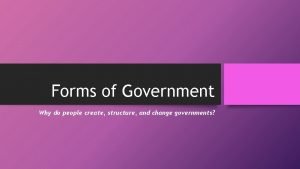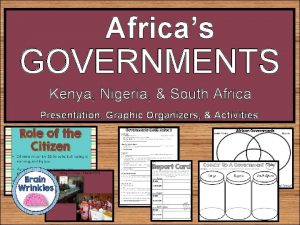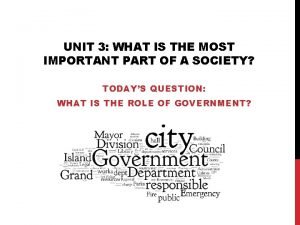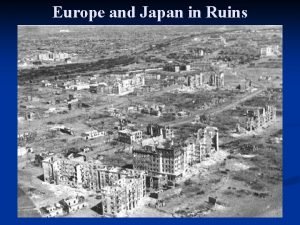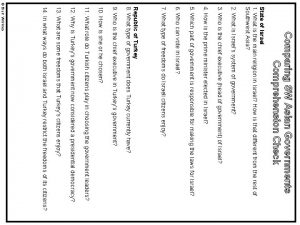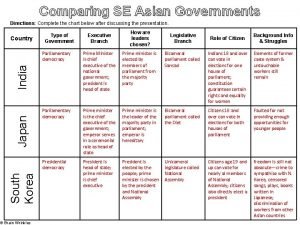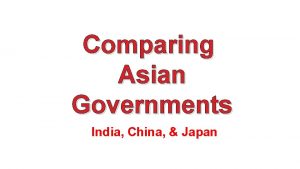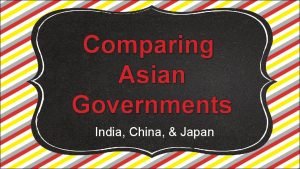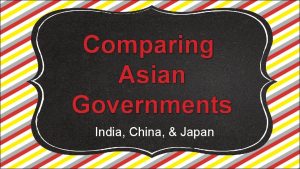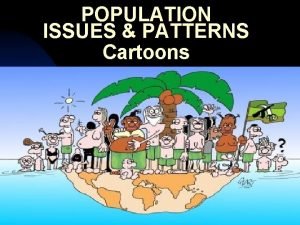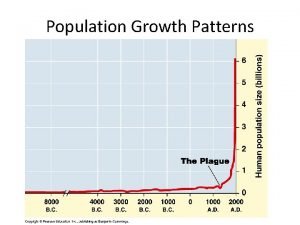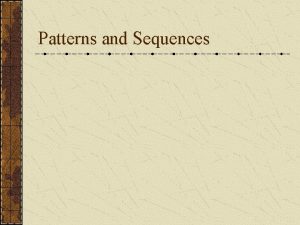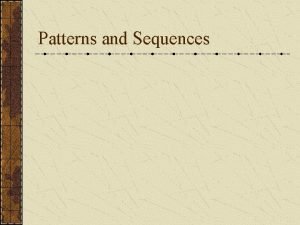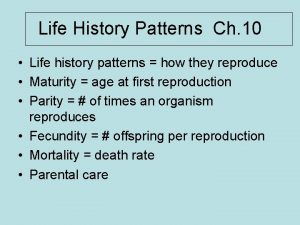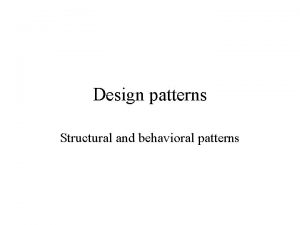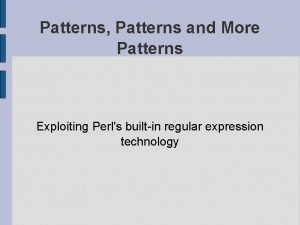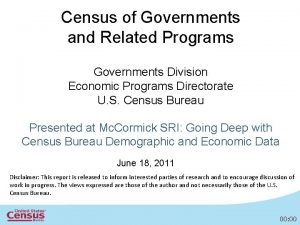Chapter 27 Population Patterns History and Governments Population













- Slides: 13

Chapter 27 Population Patterns & History and Governments

Population Patterns • Human Characteristics – 1. 5 billion people • 25 % of world population • Major ethnic groups – Chinese, Tibetan, Korean, Japanese, and Mongolian • China – “people of the middle kingdom” – Major ethnic group: Han • Major dynasty in power from 206 B. C. to A. D. 220 – Other ethnic groups (8%) • Belong to 55 different groups – Most live in Western and Northern China » Ex. Tibetans – ruled by Chinese since 1950

Population Patterns (cont. ) • Taiwan – Most Taiwanese descended from Chinese who came hundreds of years ago – 15% came after Communist takeover of China – Taiwan’s original inhabitants • ABORIGINES – Related to people of Southeast Asia – 2% of Taiwan’s population

Population Patterns (cont. ) • Japan, Korea, & Mongolia – Japan • Ethnically HOMOGENOUS – 99% Japanese – Crossed from Korean peninsula centuries ago • Native inhabitants: AINU – Forced to Northern island: Hokkaido – Korea • Also ethnically homogenous • Trace origins to early peoples from Northern China and Central Asia – Mongolia • Mostly ethnic Mongolians • Once ruled largest land empire in history • Divided into different linguistic groups – 90% speak KHALKHA Mongolian language

Population Patterns (cont. ) • Where East Asians Live – Most barren and mountainous – Population distributed unevenly – Most East Asians settle in coastal or fertile river areas • Some of these most densely populated on Earth • China – 90% live on 1/6 of land • Fertile valleys of great rivers and plains • Major cities located in these areas – 6 -13. 5 million each – Rugged Western provinces • Xinjiang – Farmers and herders – sparsely populated • Inner Mongolia – 2. 5 million – Taiwan • 22. 6 million • Space limited • Live in cities like TAIPEI or close to coast

Population Patterns (cont. ) • North & South Korea – Most live in coastal plains that wrap around Peninsula – 2/3 live in growing cities like SEOUL and PYONGYANG • Japan – Limited area for large population – Mountains in center • Only valleys and coastal plains good for settlement • 78% of 125 million peopleurban coastal areas – TOKYO CORRIDOR » Series of cities crowded together on main island of HONSHU » TOKYO – world’s most populous urban area

Population Patterns (cont. ) • Japan’s Urban Lifestyle – Neon signs, skyscrapers, people living in apartments – Efficient transportation system: bullet train • 11 hr. trip by car takes 5 hours • Migration – China • Most Chinese still live and work on farms – Chinese controlled Hong-Kong » Attracts immigrants • Special privileges – South Korea • People fled North Korea mid-1900 s – South Korea has twice as many people as North Korea

Population Patterns (cont. ) • Challenges to Growth – Urbanization has led to overcrowding in cities • Chinese solutions: build rural agricultural towns in remote areas – Designed to provide more social services/better quality of life – Unchecked population growth • 1979: one-child policy begins (recently ended)

History and Government • City of Xi’an – Life-size terracotta army • Meant to protect Emperor Qin Shi Huang Di in the afterlife – He also built GREAT WALL OF CHINA • Tell us much about East Asian past • Ancient East Asia – Home to some of the world’s oldest civilizations – China was CULTURAL HEARTH for neighbors • A center from which ideas and practices helped shape East Asia’s cultures

History and Governments (cont. ) • China’s Dynasties – Chinese culture started 5, 000 years ago in Wei Valley (Yellow River area) – Records first kept under Shang DYNASTY, or ruling family • Took power 1600 B. C. in North China Plain • Goals of Shang and later dynasties – Put down rebellions – Prevent incursions of Central Asian nomads – Fix China following natural disasters – When dynasty fell it had lost the “mandate of heaven” • i. e. - “God” wanted this

History and Governments (cont. ) • Zhou Dynasty – 1122 B. C. – Ruled for 900 years – Contributions • Culture and trade spread • Development of iron tools • Life of CONFUCIUS – Chinese philosopher » System of thought based on discipline and moral conduct » Highly influential even today • Life of LAOZI – Founder of DAOISM » Philosophy of simplicity and harmony with nature

History and Governments (cont. ) • 200 s B. C. – Qin Shi Huang Di unites China • Builds first section of Great Wall • Later dynasties – Han, Tang • Chinese culture spreads to all of E. Asia – Ming • Zheng He sails to E. Africa – Qing • Mid-1600 s to early 1900 s

History and Governments (cont. ) • Korea – 1200 B. C. • Chinese settlers bring culture to Koreans – Buddhism spread a bit later and becomes major Korean religion – Later centuries • Silla and Koryo dynasties unite Peninsula • A. D. 1300 – China takes Korea » Confucianism spread – becomes model for Korean government, education, and family life
 Chapter 4 population ecology section 1 population dynamics
Chapter 4 population ecology section 1 population dynamics Study guide chapter 4 section 1 population dynamics
Study guide chapter 4 section 1 population dynamics Eclat algorithm
Eclat algorithm Why do people create structure and change governments
Why do people create structure and change governments How do the governments of kenya and nigeria compare?
How do the governments of kenya and nigeria compare? Unlimited governments
Unlimited governments Dating serves several important functions that include:
Dating serves several important functions that include: Different kind of governments
Different kind of governments Two effects of allied bombing raids on japan.
Two effects of allied bombing raids on japan. Se asia governments comprehension check
Se asia governments comprehension check Comparing asian governments
Comparing asian governments Is japan a unitary state
Is japan a unitary state Comparing asian governments
Comparing asian governments Comparing asian governments
Comparing asian governments



